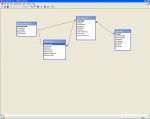Hi forum,
Attempting a database that calculates interest on loan balances for a year.
Consider that the account may have credit and debit entries through the year.
How would a bank calculate the interest? Mine is daily compounding.
I know there are functions that can calculate the interest for a period when it is daily compounding - I use these on an excel spreadsheet that handles the issue now. But, given the credits and debits through the year??
Does a bank do a calculation each day on the balance and store the interest to be summed quarterly ??
I thought of having each credit as a record (like an Asset Register) and then calculate the interest due as you would for an asset purchased and or sold through the year - days held.
And treat any credits similar and any debits the same except the interest would be negative.
A report would group all the records and give a sum of interest due for each group (positive interest less negative interest for each person).
Sounds messy when you consider that every record will be kept alive so to speak but the report will only show the relevant totals and the records will only grow to 100 odd max whereas our asset register can produce a report easy to read when dealing with many more records.
Appreciate some direction on this before I go off on some wild goose chase.
Attempting a database that calculates interest on loan balances for a year.
Consider that the account may have credit and debit entries through the year.
How would a bank calculate the interest? Mine is daily compounding.
I know there are functions that can calculate the interest for a period when it is daily compounding - I use these on an excel spreadsheet that handles the issue now. But, given the credits and debits through the year??
Does a bank do a calculation each day on the balance and store the interest to be summed quarterly ??
I thought of having each credit as a record (like an Asset Register) and then calculate the interest due as you would for an asset purchased and or sold through the year - days held.
And treat any credits similar and any debits the same except the interest would be negative.
A report would group all the records and give a sum of interest due for each group (positive interest less negative interest for each person).
Sounds messy when you consider that every record will be kept alive so to speak but the report will only show the relevant totals and the records will only grow to 100 odd max whereas our asset register can produce a report easy to read when dealing with many more records.
Appreciate some direction on this before I go off on some wild goose chase.


